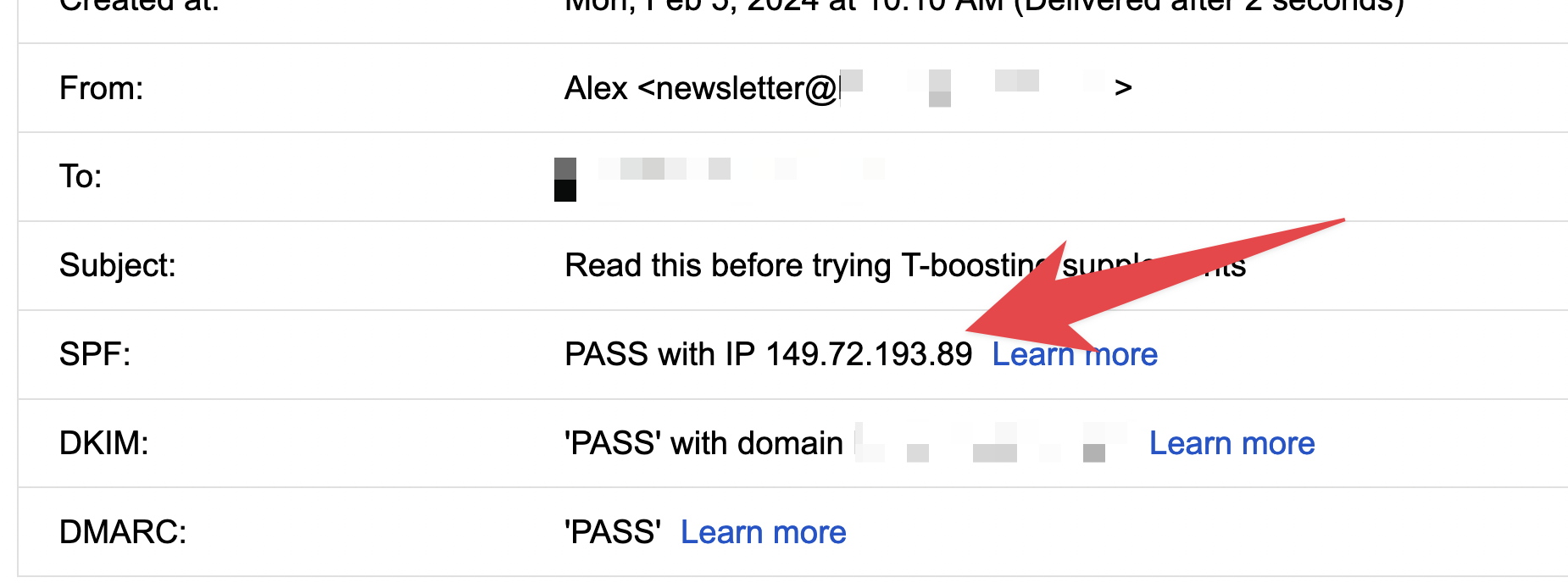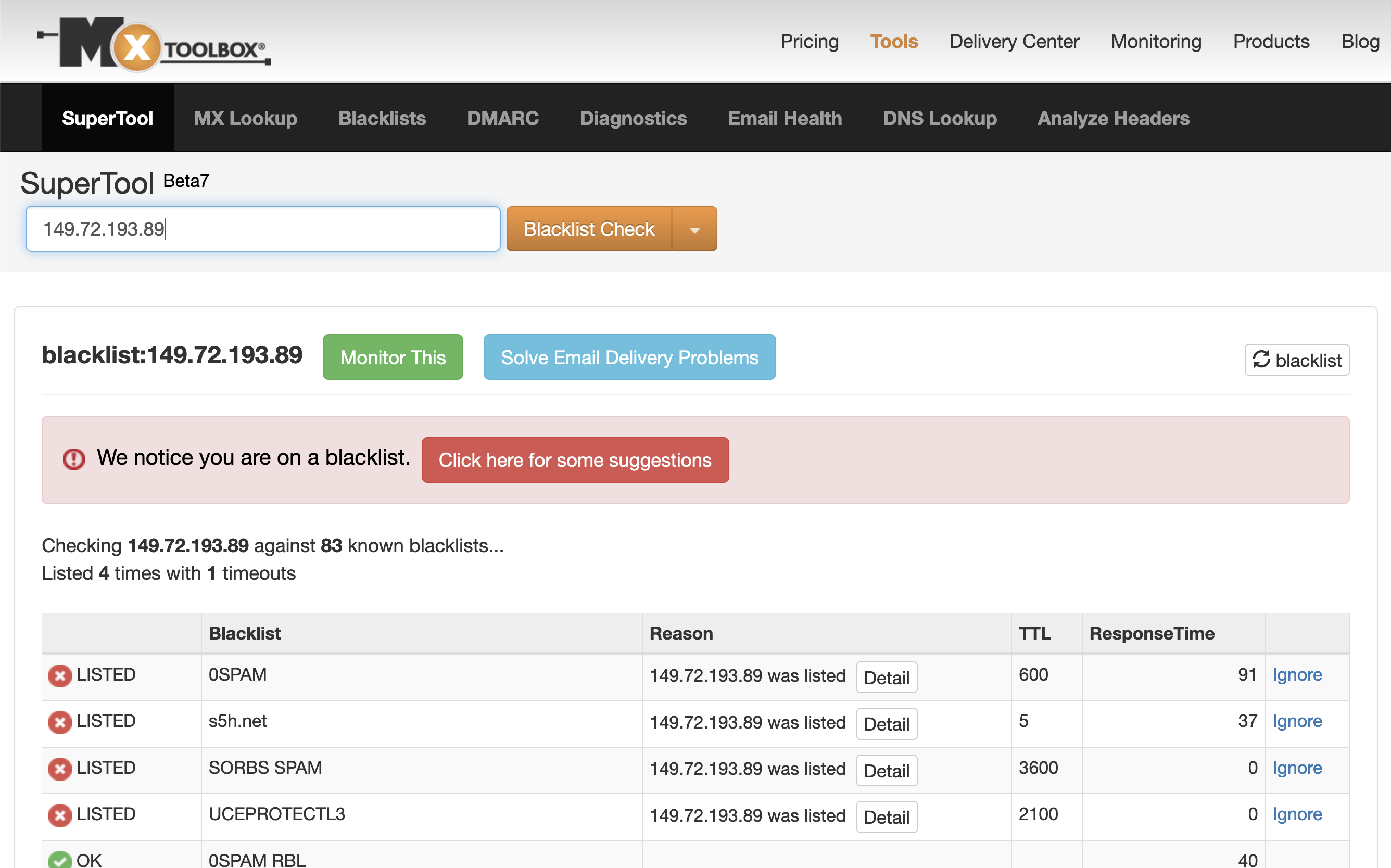"Help! My email keeps landing in spam!"
Every so often, I notice a friend on Twitter or within a community I'm part of, struggling with email deliverability issues. Each time, I make it a point to reach out and assist them in debugging the problem.
I find these problems fun!
And sometimes it's nice to have someone whose job it is to solve these problems, help you out.
For many, email deliverability seems like a mysterious black box, filled with secrets only known to the experts. However, the truth is, it's a relatively straightforward science that you can understand the 80/20 of by just reading this post.
It's Probably Not Your Fault
If your emails have been delivering fine for a while, and suddenly your open rates plummet from 40% to 1%, then there's obviously a problem that needs addressing. In such cases, the issue often lies with the IP (i.e., server) address from which you are sending emails.
So, what is an IP address?
Emails are dispatched from servers, each having an IP address. Think of it as a home address. When email inbox providers receive an email, they can identify the server it originated from. If the inbox providers recognize that the server has a history of sending inappropriate content like hardcore pornography or crypto scams, they will likely reject any subsequent emails as a precaution.
When you register for an email service, like Bento, we assign you to an IP pool along with other customers. Some email services put THOUSANDS of customers in a single pool (insane).
Example: If you're sending from Bento, you're likely in one of our shared IP pools such as marketing-1, new-customers-2 or even high-risk-10 (reserved for customers we're unsure about).
Each email service has a unique strategy and level of transparency regarding IP pool delegation.
At Bento, we prioritize extreme transparency. Within your Bento dashboard, you can view which pool you belong to, and whether it's healthy or not. This feature primarily aids our support team in debugging. We also just like the public accountability of it.
If you're not using Bento (we're sorry to hear that 🙈), you can determine which IP pool your provider has placed you in by sending a few emails to yourself, checking the headers, and entering your IP into a tool like MXToolbox.
Grab your IP address from your email:

Then add it to MXToolbox and you'll receive a result similar to this (this is an IP from one of our competitors):

It's typical for most IP addresses to appear on one or maybe two blacklists.
Some are a bit more sensitive than others.
However, if you find your IP on numerous blacklists, it generally indicates a poor overall reputation.
While Gmail and Yahoo offer tools such as Google Postmaster, from our experience, they often inaccurately estimate reputation or lag so much there's no data to gather.
TLDR: multiple listings, like the above screenshot, you have an issue.
And most importantly, the above may not even be your fault.
As we mentioned earlier, email service providers group your emails with those of other customers. One of those customers could be sending out spam, and you're inadvertently suffering collateral damage because of it.
If the above is true, and you're not the one tarnishing the reputation of the IP pool, then the simplest solution is to contact support and request a move to another IP address.
Most providers will be happy to oblige. If they gaslight you then leave.
If It's Not Their Fault, It Could Be Yours
If the IP addresses you're sending from appear clean, then you need to investigate your own domain reputation.
Similar to the above, enter your domain into a blacklist checker to see if you spot any obvious listings.
Each listing isn't a catastrophe as you can apply to get delisted relatively easily.
If you're a responsible actor, most of the DBL (domain blocklist) providers will unblock you within 24 hours, provided you've rectified the issue. Some will even automatically delist without your action within a few days if you've stopped sending spam.
In reality, only a handful of DBLs cause widespread deliverability issues due to their adoption; these are Spamhaus, Barracuda, and Sorbs.
All three of these providers strive to maintain a clean and safe web meaning they really only list when there's an actual problem.
They aren't the bad guys, they're trying to stop the bad guys. Fun fact: we use Spamhaus in our product to block bad emails being sent from our platform.
In addition to checking DBLs, log into your Google Postmaster account and examine your domain reputation.
If your reputation is "Low" or "Bad", you have a problem.
"Oh no! My reputation is low :((( and I'm listed in Spamhaus. Should I just create a new domain???"
No! Do not start a new domain under any circumstances!
This is a common solution that many people resort to.
However, the truth is that building up the reputation on a new domain is often much more challenging than repairing the reputation of an aged domain with history.
You need to perceive these email providers more like humans with memory. If you behave well for a sufficient period, they'll forget your past misdemeanors and start letting you back in.
Fix your issue, be good + keep emailing, and you'll be back in the good books in no time.
Which brings me to a crucial point...
Figure Out Why Your Reputation Tanked
If you discover that yes, you are the one to blame, you need to determine why.
If this happened unexpectedly, then it's likely that a specific event triggered this.
A few common reasons include:
Your system was compromised, and bad emails were sent: We all try our best, but spammers try harder. Often, an old system or even something like sign-up emails can be exploited for spam. Check your Google Postmaster account for the day your reputation dropped and click the "Spam Rate" tab to see if there were any spikes. If there are spikes, investigate if any of your systems were dispatching these emails.
You were list bombed: This one is a bit more subtle, but malicious actors often discover that your app can, and will, send emails easily, so they exploit it to overwhelm an inbox. Why? They may want to fill up an inbox so the user can't see password reset emails coming in.
You haven't mailed the list in a long time: If you haven't emailed your list in a long time, then there's a chance that when you tried to revive your list, there was an above-average number of dead emails in there. Closed accounts, full inboxes, etc. If this is the case, you should prune the list and clean it up before sending again.
It's All Temporary
Whether you find yourself in a naughty IP pool or your domain is blacklisted by the Google gods, it's all going to be OK if you're a good faith actor.
Rectify your issues, move into a clean IP pool, and ensure you're with an email marketing provider who is willing to work with you on these issues — like we are at Bento!
If you have any questions, please join our Discord and ask away.
Enjoyed this article?
Get more email marketing tips delivered to your inbox. Join 4,000+ marketers.
No spam, unsubscribe anytime.


